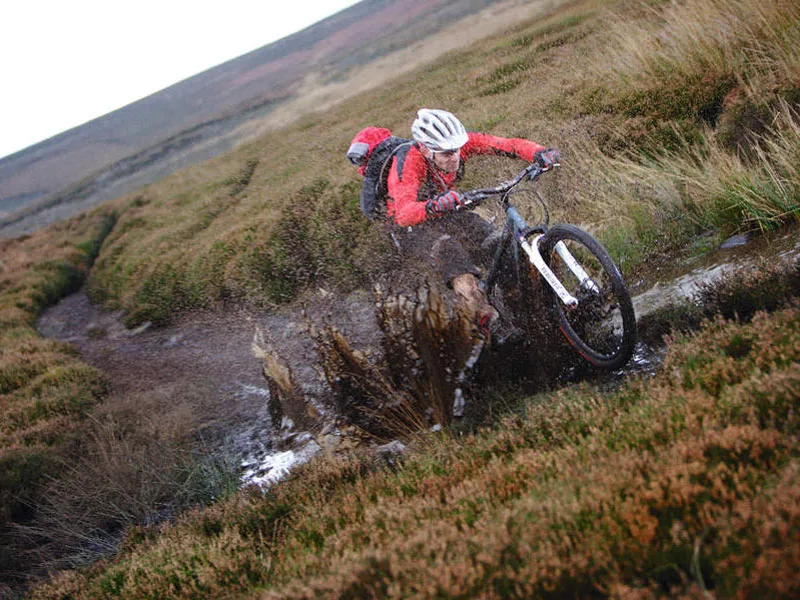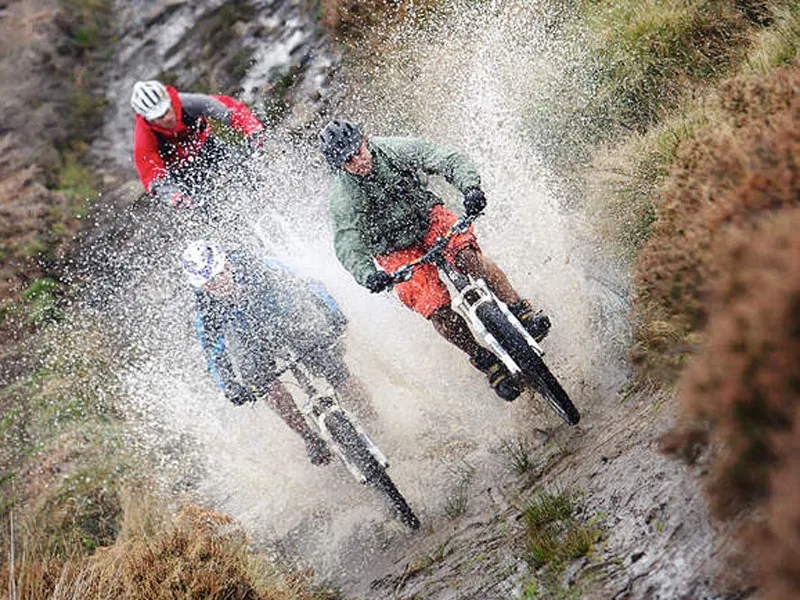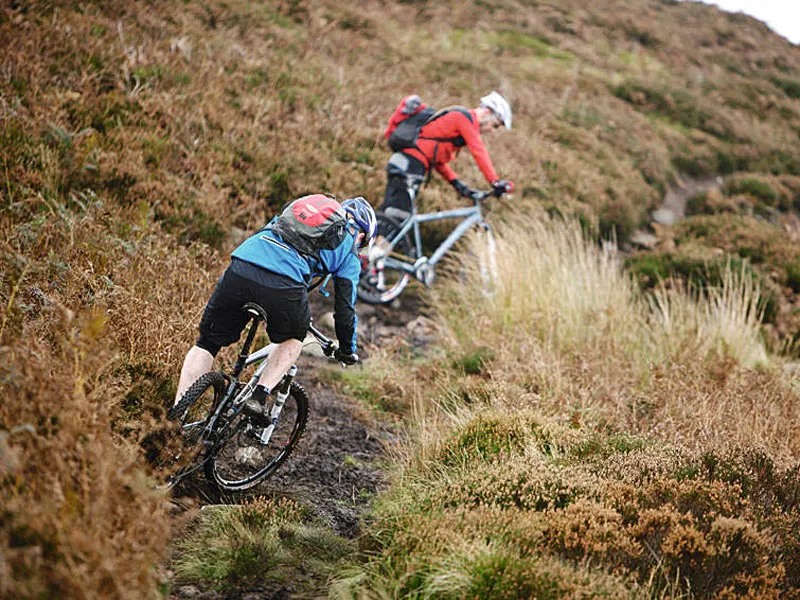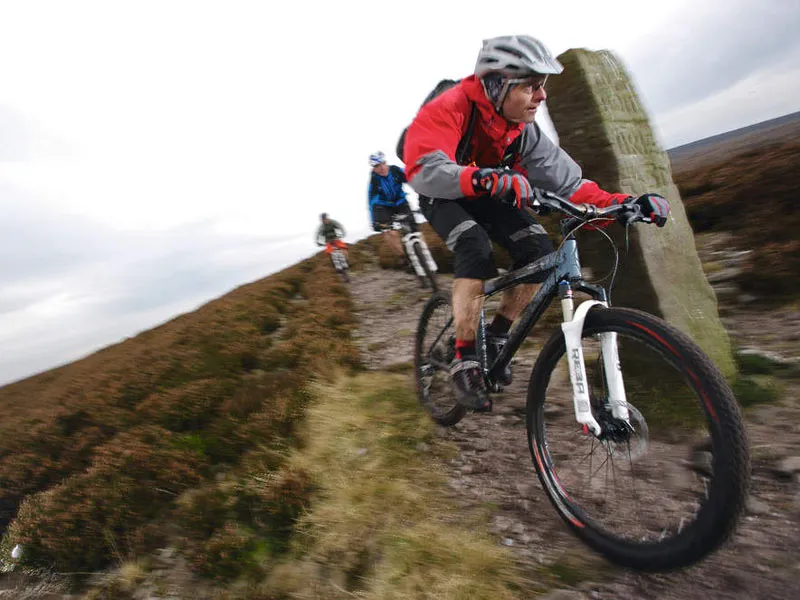Here at BikeRadar we ride all year round, so we know for a fact that winter is a fantastic time to ride your bike. For a start, nobody else is out riding, rambling or getting in the way, so you’ll have even the busiest summer trails to yourself. You won’t get sunburnt or have to stand around swatting midges while queuing to start your favourite singletrack descent either.
Once you’re out you’ll realise that the weather is hardly ever as bad as you think, and that the rain always looks worse hitting a window than it does when you’re hitting the trails.
When it actually freezes properly, you’ll find the fastest trails, clearest skies and freshest air that you’ll get all year, and you can’t beat ending a ride with a mug of tea and a slice of cake by a roaring fire. Except maybe with a pint and pie and peas by a roaring fire, but you get the idea.
State of mind
Making the most of winter is just a state of mind – or rather a state of not minding. It’s about not minding your hands occasionally being a bit cold to start with or getting chilly toes by the end of a long epic.
According to seemingly superhuman Alaskan athletes like Iditabike Extreme winner Andy Heading, the key is not becoming a central heating softy in the first place. Don’t whack the thermostat to ‘max’ as soon as the forecast drops to single figures and don’t dig out the oven gloves automatically either. If you let your hands get cold and then warm up naturally, they’ll be far hotter than any glove can make them. You soon won’t even mind swearing through shivering teeth on the first descent either, once you discover you’ll be the perfect temperature for the rest of the day as soon as you start climbing again.
EastEnders is your enemy
If you’re not naturally evangelical about iciness then you need to realise that soap operas are Satan when it comes to staying at home, so tear yourself away from the telly and onto the trails. You’ll soon be creating your own dramatic storylines and classic comedy moments to laugh about down the pub.
There’s another great way to make sure you get your ride in while proving you’re a proper hardman to workmates too. Either riding into work, or taking your bike and kit in and riding on the way home neatly avoids the problem of dragging your lazy arse out of the lounge.
Accelerate, not hibernate
It’s wise not to go mental though, because there are more colds and sniffles going round in winter than summer. Eskimo skidoo drivers will tell you that sucking in too much frozen air causes bronchitis, so save the sprints until spring and put a buff or scarf over your mouth if it’s really cold. A couple of ‘sweaty and a bit out of breath’ rides each week should keep you ticking over, so you’ll still fit in the same clothes next spring as you did last summer.
Snot of the Antarctic
Be smart with your health. Your immune system is weakest right after exercise, so avoid anyone snotty immediately after a ride. Eat more fruit and veg, drink more juice and rattle down the occasional vitamin pill to keep your flu-fighting defences up to strength. If you do get snotty, cut back on dairy produce and switch to goat’s milk, and drink as much water as possible to rinse it out.
Finally watch carefully for any classic signs that you’re working too hard – cold sores, mouth ulcers, sore throat – and back off for a bit if they appear. Our rule of thumb? You can’t get much fitter in a day, but you can get a whole lot iller, so if in doubt leave it out.
Season’s tidings

We don’t need to tell you that winter riding is very different to summer riding but the essential survival skills are pretty simple to learn. You will fall off on ice, but you’ll hurt yourself a lot more if you tense up. Stay relaxed, don’t brake and try to get onto grippier ground while steering as little as possible. Don’t try to shuffle across ice astride your bike either, we’ve seen some eye-watering injuries happen that way!
If the temperature is low, watch out for black ice or frozen chill spots in dips, under trees or the bottom of wheel ruts, even if it’s not icy elsewhere. As for snow, treat it much like mud. Attack with as much momentum/speed as you dare, lean back and hope – after all, the results are generally far more comical than critical.
Cold comfort
The most important knowledge though is the knowledge that stops you dying. Hypothermia is a cunning killer because you actually feel warmer the worse it gets. If you – or your mate – have been feeling seriously cold for a while and start to feel warm and fancy a lie down, then don’t. Put on all the warm clothes other riders can possibly spare and get somewhere warm as fast as possible. Whatever you do, don’t fall asleep, as the chances are that you won’t wake up.
Staying warm in the first place removes the risk altogether. Before a ride, check that everyone with you is properly prepared. It might sound harsh to stop someone in a cotton hoodie and tracky bottoms coming on your moorland epic, but it’s much harder trying to nurse a lethally chilled chav home two hours after nightfall.
If you have to stop to mend or eat something then find yourself some shelter behind a wall, preferably at the bottom of a hill, and don’t stand around in freezing winds. Make sure you keep an eye on the weather and your watch, too. If it’s looking like the original route is a risk, get off the hill as fast as possible before you end up in a blizzard or it turns pitch black.
Where to go in winter

You won’t run into trouble at all if you know how to plan a good winter route, and again the basics are pretty simple. The tops of hills are colder and windier than the bottom. They’ll probably be less muddy and more likely to be frozen, but you’re more likely to freeze too. On sunny days, west-facing climbs stay frozen longer in the morning, but stay sunlit later. This means it makes sense to start your rides on the sunset side and head east.
Avoid anywhere that’s already marked as marshy on a map and learn which routes are 4x4 or horse riding favourites, because they’ll be churned to shit long before Santa comes. Trails designed for traffic – Land Rover routes to shooting butts or old mine/quarry tracks – are likely to be rockier and faster-running than sheeptrack when the conditions are soggy.
Most of the normal mountain biking meccas stay rideable all year round, but keep an eye on forums or ring local shops to check ground conditions. As a rule of thumb, North Wales shrugs off rain better than south, DarkPeakis better than WhitePeak and the Yorkshire Dales are better than the North Yorks Moors. And if anywhere gets snow, it’ll be Scotland. Check www.bikeradar.com/mtb/routes for suggestions.
Make sure that you have escape routes ready at regular intervals on the ride so that you can get to shelter, civilization and safety – or just somewhere a bit less grim – if your plans suddenly go penguin-shaped.
One we made earlier
If you’re not feeling that explorer vibe, a pre-signed, all-weather trail centre with a cafe at the finish is fantastic for failsafe winter riding. Be aware that they’re generally still in wild places that can be a long way from help though, so head out properly prepared.
There are still plenty of races/rides and events going on during winter too. Ploughing or plummeting through the slop with a bunch of other mud-caked morons is a great way to boost your enthusiasm. Turning up to a winter series will also keep you riding regularly right through to spring without getting all serious and twisted about solo training.
Get out with your friends

Part of your preparation should involve getting a good group of mates together. You can go out on your own, but it’s a lot safer and far more fun teaming up with some like-minded fools for an Arctic roll.
They’ll drag you out when you didn’t want to go and share grim glances when the snow catches you on a summit. They can even point Mountain Rescue to the place they last saw you, before going off to the pub and sitting round exaggerating almost as much as you will afterwards.
Try a slice of winter wonderland
Clear trails, clear skies and proper tales of epic adventure – hopefully we’ve made you realise why we get a real riding horn on when most people are thinking of hibernating. Sure you’ll get cold and wet occasionally, but that’s no different to summer, and once you try a slice of winter wonderland you’ll be kicking yourself you didn’t do it earlier.
With a little practical knowledge, a bit of common sense and cold weather preparation you can gift yourself loads of marvellous winter riding. See you out there!




